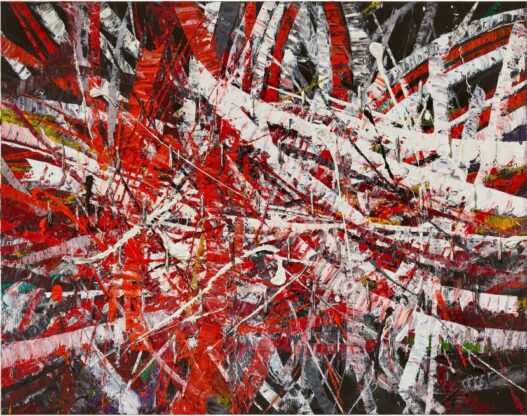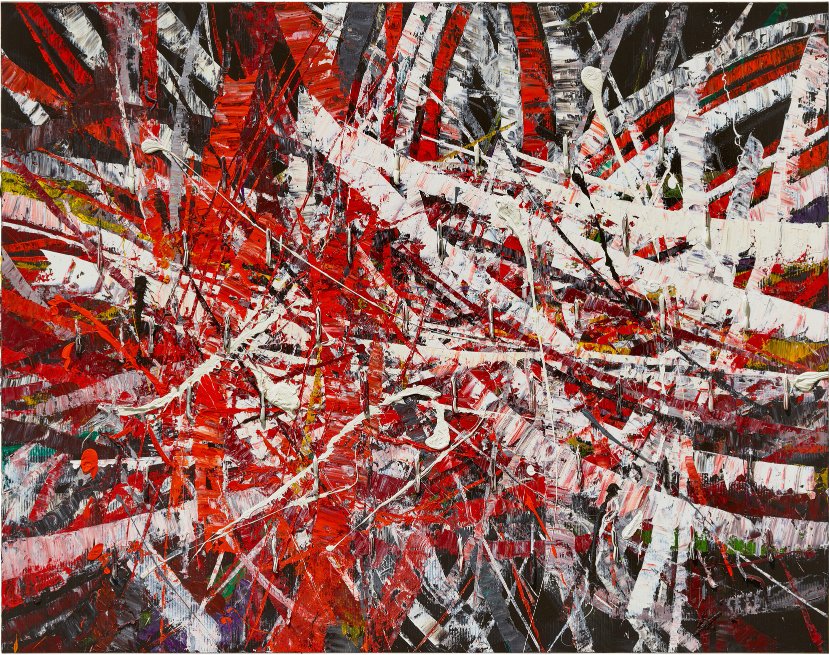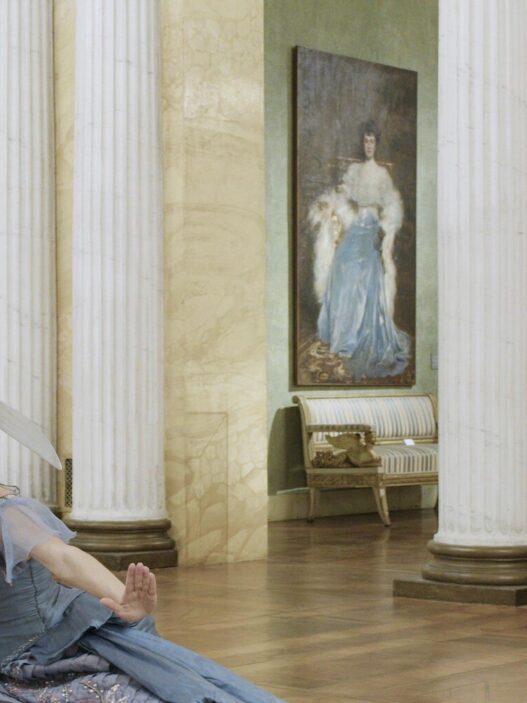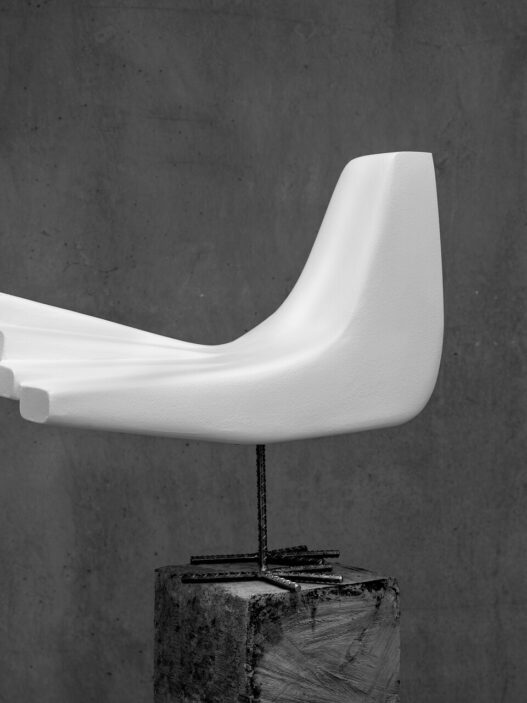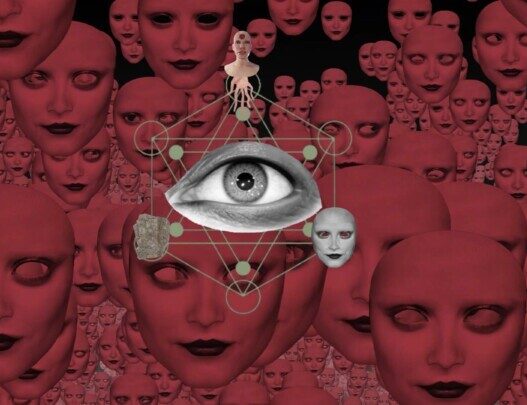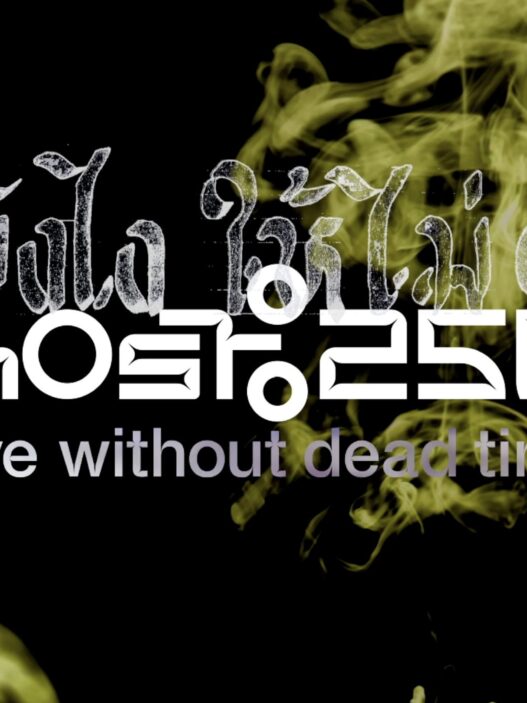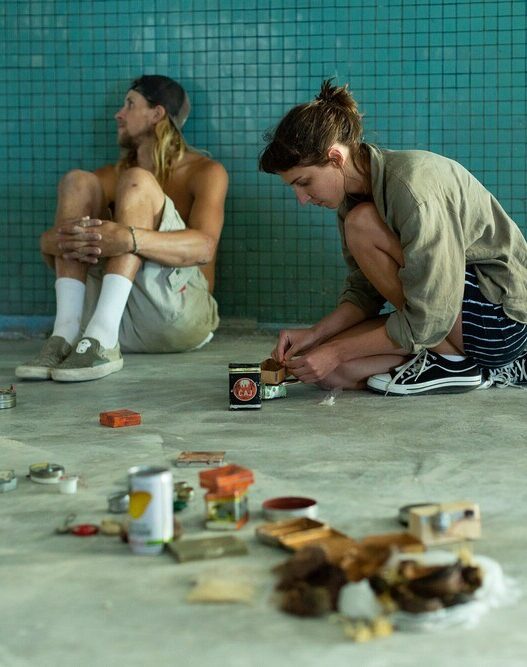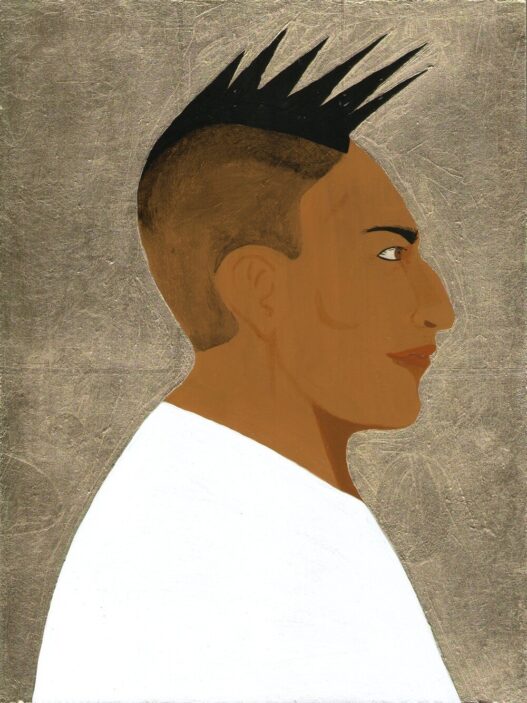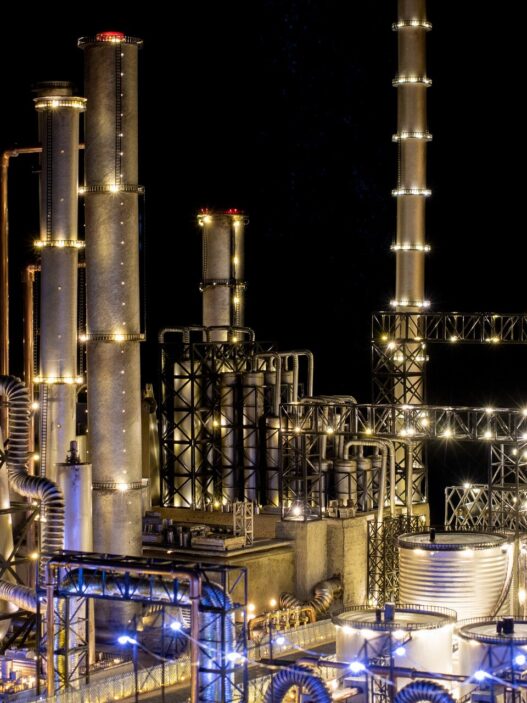September 29–November 5, 2022
Backcountry, a display of brand-new works by Mark Grotjahn, is on view at Gagosian. This is his first showing at the London gallery since 2016.
Grotjahn incorporates diverse abstractions into his paintings while using a wide range of ever-evolving motifs and methods. He considers the extensive history of nonrepresentational painting, from antiquity to the present, while exploring color, perspective, seriality, and the sublime. In Backcountry, Grotjahn takes another step away from the anthropomorphic foundations of prior series like Masks (2000-) and Face (2003-17), making allusions to rural terrain and moving closer to a totally spontaneous style of expression.
The majority of the paintings on display in London have a horizontal format on dark backgrounds and were all created using oil, Grotjahn’s preferred medium, on cardboard mounted to linen. He sometimes carves through the cardboard to reveal the layers of paint. A collection of work created in 2016 for an exhibition at Casa Malaparte on the Italian island of Capri served as the inspiration for the Backcountry series (2021-). Grotjahn launched the Capri series of paintings with a group titled New Capri, the compositions of which mimic the house’s clifftop setting. The collection was inspired by the iconic modernist home of writer Curzio Malaparte (1898–1957).
In Backcountry, Grotjahn once more explores the formal and expressive potential of paint, experimenting further with abstract mark making, color, and texture, combining systematic structure with gestural spontaneity. The title of the piece was inspired by the artist’s ski touring and fly-fishing activities in Colorado. He attempts to give the paintings a graphic muscularity by combining black grounds with various colored substrates, which gives them a new feel from his earlier white paintings. He notes, “In the new paintings, it’s into the darkness. It’s the stars, and it’s being a little creature on a huge planet.
Untitled (Backcountry Capri 54.79) (2022), one of the featured works, is characterized by broad, ragged streamers of white and red that arc across deep darkness. Others, like a skein of drips and a loose grid of “slugs,” or little rolls of paint that Grotjahn makes by scraping off and reapplying extra impasto to the surface of the piece, interrupt these aspects. These three-dimensional elements disturb the entire composition both aesthetically and texturally as they rest on groups of vertical and horizontal strokes. The slugs are “the scar on the arm that makes the arm more attractive,” according to Grotjahn.
Other pieces in Backcountry are distinguished by painterly lines that intersect to form recognizable almond-shaped outlines, shapes that call to mind the stylised eyes of the Face series. Grotjahn’s most recent works, however, frequently show a broader application approach than what is typically seen in his early work and by an ever-deeper immersion in the nonobjective, demonstrating a devotion to color, texture, line, and movement The paintings in Backcountry ultimately portray an acceptance of the freedom provided by the size and force of nature.
20 Grosvenor Hill
London w1k 3qd









